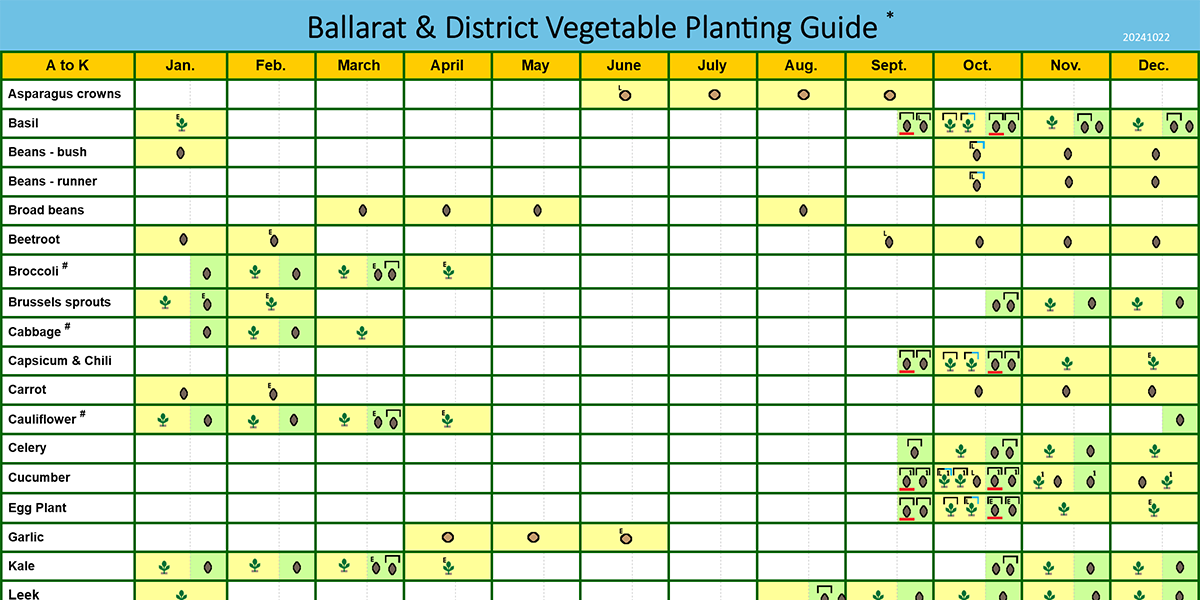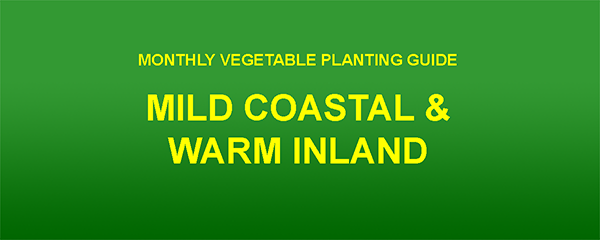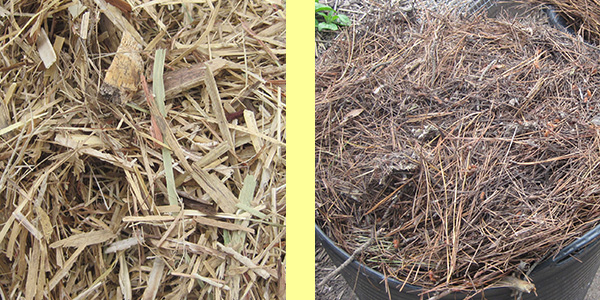Spreading mulch on vegetable beds offers many benefits, but mulch also has some negative side effects. The Seasonal and Staged mulching processes maximise the benefits of mulching while minimising the negative side effects. This page explains the process of Seasonal and Staged Mulching.
Placing mulch on vegetable beds reduces evaporation (results in less watering) adds valuable nutrients and organic matter and inhibits weeds. However, mulch also reduces soil temperature (not good in early spring when soil needs to be as warm as possible), encourages pests and increases the risk of fungal diseases. For a detailed explanation of the pros and cons of mulch see: The Advantages And Disadvantages Of Mulching Vegetable Beds
This is involves applying mulch when the weather is warm and leaving beds bare in the cooler months. The hotter the weather the thicker layer of mulch is applied. When the seasonal weather is milder but still warm (late spring/early Autumn) apply mulch, but only a thin layer.
When and how much mulch is applied will vary depending on whether your garden is in a cool mountainous, mild coastal or arid inland area. The wetter and colder the climate the longer the period when no mulch is applied. If you are not sure then use this rule of thumb: If the surface soil is drying out quickly in sunny weather then it is time to start mulching.
The only exception to mulching being if a bed is being fallowed, if that is the case then cover with a thick layer of mulch regardless of the season.
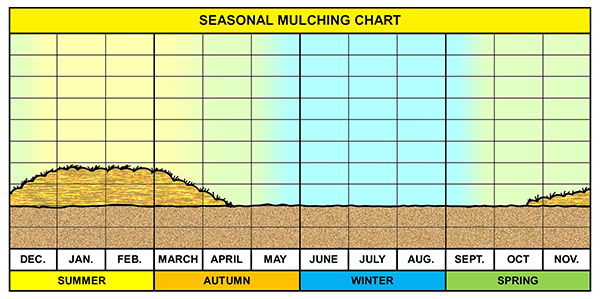
Mulch heavily in summer, lightly in the cooler months of spring and autumn and not at all in winter. The only exception being if a vegetable bed is being fallowed, if that is the case then cover with a thick layer of mulch regardless of the season.
This involves not applying mulch until after the first stage of a plant’s growth has been completed, regardless of seasonal weather conditions. Sow seeds and plant seedlings into bare soil and only apply mulch after the planted seeds and seedlings have grown big enough (about 20 t0 25 cm high) to have mulch spread around their base without touching their lower leaves. But only apply mulch if the seasonal mulching conditions are right (warmer weather).
The only exceptions being if garlic or onions are being grown as they are susceptible to fungal diseases, which thrive in mulch. Beds growing these vegetables should have little or no much applied to them even in high summer.
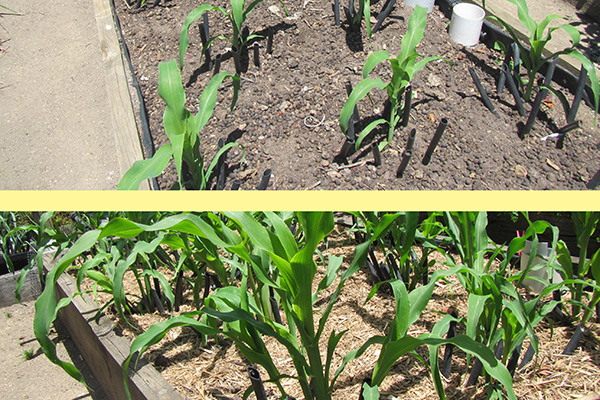
TOP: Corn seedlings that were planted into bare soil. Heat loving plants such as corn do particularly well when planted into bare soil as the soil will be warmer than mulched soil, corn growing in warm soil will grow more quickly than if the soil is cooler. BOTTOM: larger corn plants with the soil they are growing in covered with mulch. Once the hot weather arrives mulch turns from a disadvantage to an advantage as it reduces evaporation and inhibits weeds. The soil will still be cooler under the mulch than bare soil, but once the weather is hot even mulched soil will be warm enough to promote plant growth.


